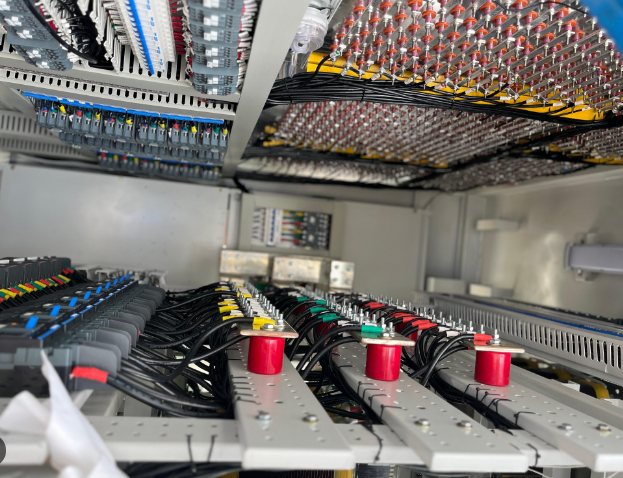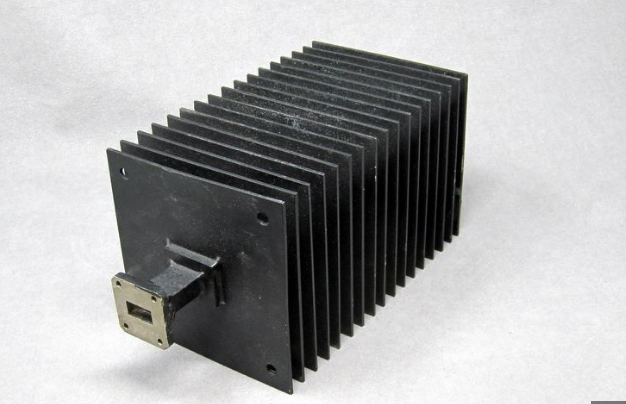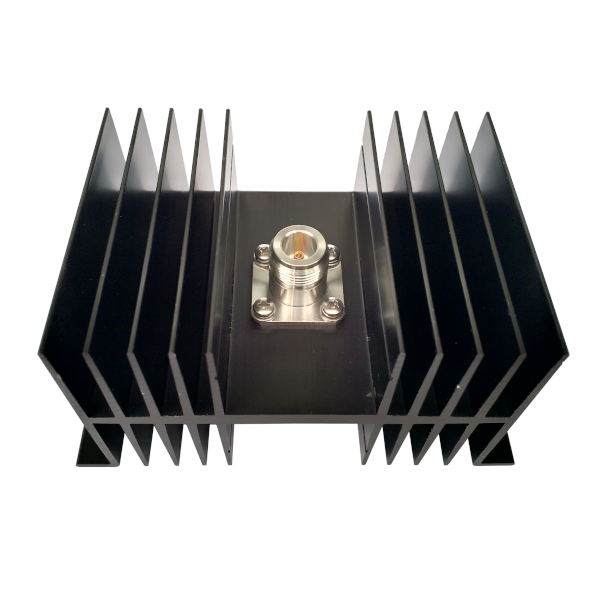A load bank simulates real-world conditions by applying controlled loads to power systems, typically ranging from 100 kW to 2 MW, allowing detailed performance testing. In contrast, a dummy load absorbs power without measurement capabilities, usually rated at 50 to 1,000 watts, used primarily for RF applications. Load banks provide critical data, while dummy loads offer basic functionality.
Functionality
Application of load banks is indispensable in testing the performance and reliability of power systems, especially in industry. For example, a load bank rated for 200 kW can simulate full capacity on a load test of a generator. In this case, the applied load will serve to show how the generator behaves under maximum stress. This may take several hours and allows critical data to be obtained, such as fuel consumption rate, which may be in the range of 0.5 liters per generated kWh. This can also ensure that not only will the generator work but that it works efficiently.
In a practical aspect, a UPS system for a data center with 150 kVA may be considered. A load bank test will show precisely how well the UPS supports voltage stability under different loads. If, during a test, the voltage of the UPS falls below 220 volts for a load of 120 kW, then that shows there might be some potential issues that need to be sorted out before the system goes live. In this manner, it limits the risks involved with any kind of power outage, which can cost data centers as much as $9,000 per minute in lost revenue.
Today, dummy loads rated within an impedance of usually 50 ohms are in popular usage where RF applications are concerned. By way of example, a rating of 1,000 watts of power makes for a dummy load useful in the testing of radio transmitters without broadcasting signals. The thermal resistance rating of the dummy load handles the heat generated when electrical energy is dissipated during full-power testing, which can be in excess of 100°C. The advantages include being able to operate continuously during maintenance without interference or further damage to the transmitter.
It is also said that the cost comparison speaks volumes on their specific functionalities, too. The cost of investing in a load bank could range from $5,000 to $50,000, depending on the advanced features and multi-simulation operational capabilities. As opposed to this, a basic dummy load will range from $50 to $500 and is available in order to serve small-scale operations.

Complexity
The load bank is a sophisticated system designed for accurate stimulation of actual loading conditions. They come in purely resistive, inductive, or capacitive types—or a combination of any two that allows the creation of several kinds of power factors. A typical advanced load bank would have a resistive load with 1.0 power factor and a reactive load with power factors from 0.8 to 0.9. This level of sophistication enables the engineers to conduct thorough performance tests on either the generators or the UPS systems under conditions closely approximating those encountered during actual usage. The tests can take upwards of 30 minutes to several hours and offer comprehensive data regarding system behavior and reliability.
A load bank operational setup involves a number of advanced features such as programmable load profiles. A number of models have remote monitoring and control capabilities, whereby loads can be manipulated in real time. Such a load bank can also be programmed to vary the loads from 10% to 100% in 10% steps for a 500 kW capacity. Dynamic loading thus plays a very important role in finding out the operational limits and possible failures of the generating sets, thus avoiding costly downtime. Since companies may face an average of $260,000 per hour of lost production from failure in generators, the investment in such technology is thought to be well justified.
In contrast, a dummy load is a relatively simple device that is usually entirely resistive in nature. Many such units have fixed resistances, typically 50 ohms for RF work, in power ratings from 100 watts up to several kilowatts. A typical example is the 500-watt continuously dissipative dummy load, which has no adjustment and is therefore extremely suitable for uncomplicated test situations where one does not need data. By definition, dummy loads are simple and can perform adequately with a minimum of setup, but cannot offer depth in performance insight that might be derived from load banks.
Construction of dummy loads requires less material and components, which make them a bit cheaper. A good-quality dummy load rated at 1,000 watts will cost approximately $150, whereas the average setup of a load bank can cost from $20,000 to $40,000, depending on its features.

Testing
Load banks are considered crucial in the operation of such power generation systems by providing a set of comprehensive and heavy-duty tests. Moreover, they offer an artificial but controlled environment that simulates site operating conditions. As an example, during a load test of a generator rated at 1,000 kW, the use of a load bank that can apply 800 kW is possible for approximately 12 continuous hours. In this process, the parameters of voltage stability and frequency may be monitored by the operating engineers. Information derived from these tests can further show the efficiency rate, which for a good machine could be around 90%. The detection of any drop in efficiency presents an opportunity to solve problems before the breakdown of systems.
Load bank testing also explores other aspects of the engine’s fuel consumption. For example, a generator can consume around 10 liters of diesel every hour under full load at 750 kW. The load bank tests measure the fuel consumption at varying levels of loads, and it is useful for the planning of operational tasks. When the fuel consumption reaches 12 liters an hour under a particular load, it shows that there should be attention and maintenance so as not to incur the unanticipated operating cost that may reach $2,000 a day with inefficient usage of fuel.
Dummy loads are simple but remain useful for testing particular pieces of equipment—often in RF applications. A 200-watt dummy load enables a technician to operate a radio transmitter without transmitting a signal. If during testing a transmitter, the device operates at 150 watts, then there will be dissipation of that power as heat through the dummy load. Testing times can range from minutes up to hours depending on the equipment being tested. This dummy load is rated at 75°C, so 75°C over such is a failure mode. Again, proper specifications are important.
In regard to reliability, the load bank has much to offer in terms of data unavailable from a dummy load. A correctly configured load bank can measure and record parameters such as THD, which for efficient operation should be less than 5%. As an example, when the THD is measured at 7% on a test, it would signal that the generator is generating non-linear loads and specific troubleshooting is required.

Control
Advanced control capabilities of load banks are there to enable thorough, precise testing of power systems. Programmable controls may now be incorporated with many load banks that allow users to set load profiles, job-specific and in response to various test scenarios. For instance, a load bank rated at 1,000 kW might provide dynamic loading from 0% to 100% in steps of 10%. This versatility serves to obtain a better test of how a generator performs under conditions of many operations that may be presented during actual use or application and may help in pinpointing any potential problems that might occur. The ability to simulate loads for several hours could yield quite a good amount of information. For example, a generator could run robustly at low loads but result in an overheating problem at higher loads, which can also be monitored with sensors.
Many load banks also incorporate remote monitoring capabilities. This enables operators to monitor performance metrics, such as voltage, frequency, and current, from distances ranging from office spaces into possibly anywhere in the world often through a web interface or proprietary software. For instance, during a test, it could be that a generator’s output is continuously monitored by a load bank, showing a 5% voltage fluctuation under a 700 kW load. This immediate feedback enables technicians to make adjustments on the fly, such that the generator stays within operating specifications, which typically exhibit less than a 2 percent variation in voltage.
Dummy loads, because they are much less complex, often do not include those sophisticated control features. A very simple dummy load for RF applications might include fixed resistive components rated for 200 watts. This simplicity of design means that while it absorbs power as it should, there is no capability for monitoring or adjustment during tests. A good example would be that if an engineer connects a transmitter producing 150 watts to a dummy load, that energy would be dissipated as heat without any form of feedback on either temperature or performance. The maximum temperature rating would be 70°C for this dummy load, and it is required to always monitor this manually to avoid damage on the dummy end. Quite apparently from this, there are major limitations concerning control in dummy loads.
Output Measurement
The application of load banks mainly pertains to the precise measurement of output, which forms a critical function of the same. For example, a 1,500 kW generator connected to a load bank during a load test can provide key data points on its operational output voltage and frequency stability. This thus means that if the generator runs at a load of 1,200 kW, the output voltage should not deflect more than ±1% from its nominal value at an industrial rating of about 480 volts. A voltage drop or rise above this limit could be indicative of problems only in voltage regulation that may affect the whole electrical system.
The other critical important measurement is that of fuel consumption and is usually followed with much interest during load testing. An 800 kW generator would consume around 8 liters of diesel for an hour under a full load. Using this basis of operation, with varying loads put through by a load bank, the operator can note fluctuations in fuel consumption with applied loads. For example, when the engine is at a 50% load, fuel use may drop down to 5 liters an hour. Understanding these metrics helps to provide the basis for operational costs, so that the use of fuel can be optimized, saving as much as $1,000 a month in fuel costs at large facilities.
Load banks also measure total harmonic distortion, or THD, an important parameter for estimating electrical output quality. For example, when operating tests are conducted, a generator may show 3% THD when fully loaded, which is acceptable for most industrial uses. For example, if, under specific load conditions, the total harmonic distortion would reach 8%, then this would mean that the generator produces non-linear loads; that might bring overheat and even equipment failure. This quantity is significant while working at standards of power quality, normally it is set at the level of 5% for sensitive equipment.
Dummy loads can absorb power but are unable to replicate the degree of measurement of output, like an actual load. For instance, although a 1,000-watt dummy load may be able to dissipate tons of energy from the transmitter, it certainly cannot measure the output parameters such as voltage, current or temperature. This is how an engineer running the transmitter at 700 watts into a 1,000-watt rated dummy load will only receive some feedback telling him or her if the load is still operational.
Control
Advanced control capabilities of load banks are there to enable thorough, precise testing of power systems. Programmable controls may now be incorporated with many load banks that allow users to set load profiles, job-specific and in response to various test scenarios. For instance, a load bank rated at 1,000 kW might provide dynamic loading from 0% to 100% in steps of 10%. This versatility serves to obtain a better test of how a generator performs under conditions of many operations that may be presented during actual use or application and may help in pinpointing any potential problems that might occur. The ability to simulate loads for several hours could yield quite a good amount of information. For example, a generator could run robustly at low loads but result in an overheating problem at higher loads, which can also be monitored with sensors.
Many load banks also incorporate remote monitoring capabilities. This enables operators to monitor performance metrics, such as voltage, frequency, and current, from distances ranging from office spaces into possibly anywhere in the world often through a web interface or proprietary software. For instance, during a test, it could be that a generator’s output is continuously monitored by a load bank, showing a 5% voltage fluctuation under a 700 kW load. This immediate feedback enables technicians to make adjustments on the fly, such that the generator stays within operating specifications, which typically exhibit less than a 2 percent variation in voltage.
Dummy loads, because they are much less complex, often do not include those sophisticated control features. A very simple dummy load for RF applications might include fixed resistive components rated for 200 watts. This simplicity of design means that while it absorbs power as it should, there is no capability for monitoring or adjustment during tests. A good example would be that if an engineer connects a transmitter producing 150 watts to a dummy load, that energy would be dissipated as heat without any form of feedback on either temperature or performance. The maximum temperature rating would be 70°C for this dummy load, and it is required to always monitor this manually to avoid damage on the dummy end. Quite apparently from this, there are major limitations concerning control in dummy loads.
Output Measurement
The application of load banks mainly pertains to the precise measurement of output, which forms a critical function of the same. For example, a 1,500 kW generator connected to a load bank during a load test can provide key data points on its operational output voltage and frequency stability. This thus means that if the generator runs at a load of 1,200 kW, the output voltage should not deflect more than ±1% from its nominal value at an industrial rating of about 480 volts. A voltage drop or rise above this limit could be indicative of problems only in voltage regulation that may affect the whole electrical system.
The other critical important measurement is that of fuel consumption and is usually followed with much interest during load testing. An 800 kW generator would consume around 8 liters of diesel for an hour under a full load. Using this basis of operation, with varying loads put through by a load bank, the operator can note fluctuations in fuel consumption with applied loads. For example, when the engine is at a 50% load, fuel use may drop down to 5 liters an hour. Understanding these metrics helps to provide the basis for operational costs, so that the use of fuel can be optimized, saving as much as $1,000 a month in fuel costs at large facilities.
Load banks also measure total harmonic distortion, or THD, an important parameter for estimating electrical output quality. For example, when operating tests are conducted, a generator may show 3% THD when fully loaded, which is acceptable for most industrial uses. For example, if, under specific load conditions, the total harmonic distortion would reach 8%, then this would mean that the generator produces non-linear loads; that might bring overheat and even equipment failure. This quantity is significant while working at standards of power quality, normally it is set at the level of 5% for sensitive equipment.
Dummy loads can absorb power but are unable to replicate the degree of measurement of output, like an actual load. For instance, although a 1,000-watt dummy load may be able to dissipate tons of energy from the transmitter, it certainly cannot measure the output parameters such as voltage, current or temperature. This is how an engineer running the transmitter at 700 watts into a 1,000-watt rated dummy load will only receive some feedback telling him or her if the load is still operational.






